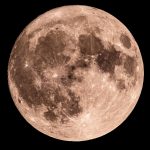
Voting for New Zealand’s Bird of the Year opened this week, as conservation organisation Forest & Bird kicked off its annual quest to find Aotearoa‘s favourite avian. However, this year there is a notable absence on the ballot. The country’s beloved kākāpō has been barred from this year’s competition, allegedly due to concerns the two-time winner will once again dominate his opponents.
« It’s a hiatus. It’s definitely not a lifetime ban, » a Forest & Bird spokesperson Ellen Rykers said to The Guardian regarding the kākāpō’s untimely exile. « You know, if the same bird keeps winning every year, that might make it not so interesting. »
Perhaps most popularly known as Slack’s party parrot and for mating with a British zoologist’s head, the kākāpō is a chonky, flightless green parrot that deserves a better world than we’ve given it. Predators introduced to New Zealand during British colonisation have hunted these native birds almost to extinction, with only 252 left alive today.
Now even its candidacy for Bird of the Year has been taken from it.
Mashable has reached out to Forest & Bird for comment.
In a bid to distract Bird of the Year voters from the missing kākāpō, Forest & Bird are attempting to draw attention to a collection of eligible « underbirds » (the feathered equivalent of underdogs). Underbird status was determined by various criteria, including « popularity in previous Bird of the Year competitions, media mentions and conservation status. » Birds afforded this designation include the pied shag, red knot, and New Zealand dabchick.
« Aotearoa is home to so many fantastic birds, and we’d love for voters to check out the full suite of candidates — including the underbirds, who are often overlooked and underappreciated, » said Forest & Bird chief executive Nicola Toki.
Forest & Bird have run the Bird of the Year competition since 2005, with the esteemed kākāpō taking the title in both 2008 and 2020. However, the organisation has historically played rather fast and loose with the competition’s rules. Last year’s Bird of the Year contest was won by New Zealand’s long-tailed bat, which you may note is not a bird at all. That didn’t seem to bother a significant chunk of voters though.
I understand and sympathise with Forest & Bird’s decision to temporarily bar the kākāpō from competition to some degree. It can feel unfair to see famous birds consistently showered with attention while less popular feathered hopefuls are relegated to the sidelines.
Even so, a democracy that disqualifies a candidate purely because they previously received a high number of legitimate votes cannot be called a democracy at all. It is meant to allow the people to decide, and the people have already made their wishes clear.
Reinstate the kākāpō as a nominee for Bird of the Year. Let the people have their fat parrot.





